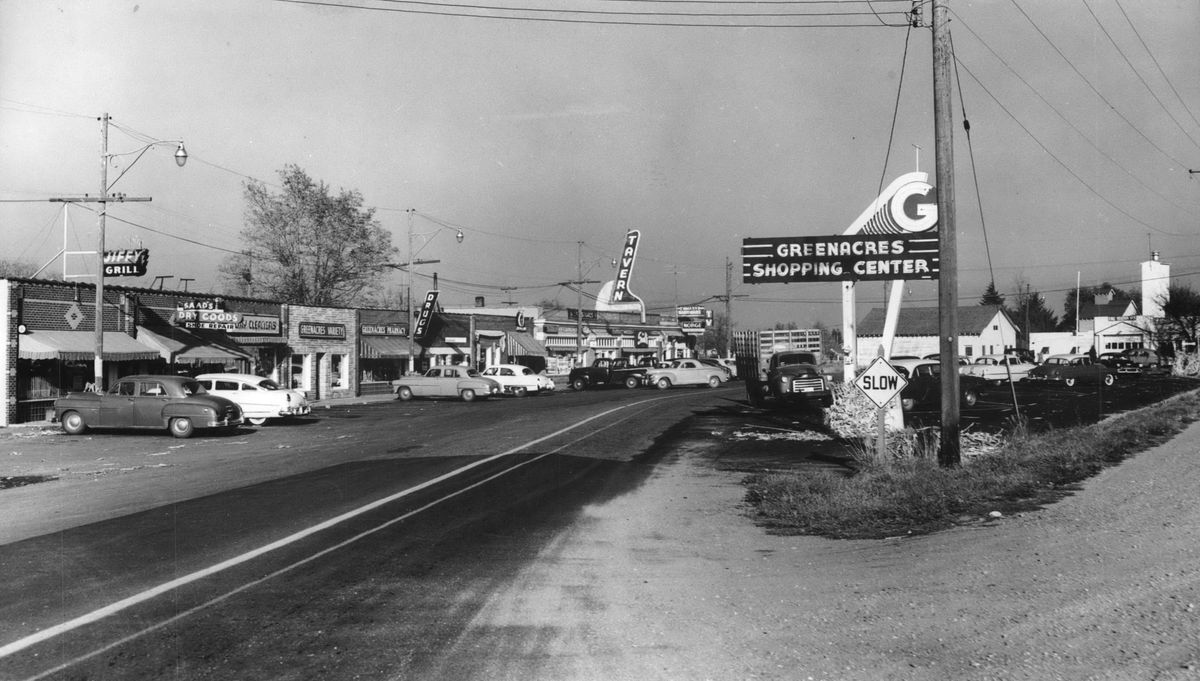Then and Now: Greenacres, Washington

A front-page article in the June 21, 1901, Spokane Chronicle spoke in glowing terms of a planned settlement 10 miles east of Spokane to be called Greenacres: “The new town or village, whichever it may be called, will not be a mining center, nor will manufacturing be its chief drawing card, but fruit raising will give employment to its inhabitants in most cases.” The developers said that they “expect to make the barren Spokane valley a thriving fruit center.”
Spokane Valley Land and Water announced that they would bring water for irrigation from Liberty Lake and other sources to the 1,000 acres they had platted with 10- and 20-acre parcels east of Sullivan Road and south of the river. They enticed the Spokane and Inland Empire electric railway through their land in 1903.
The company was formed in 1899 by banker W.L. Benham, railroad builder and mining investor Daniel Chase Corbin and his son, Austin Corbin. The company immediately began digging miles of canals, dubbed the “Corbin ditch,” to distribute water to the Spokane valley region. The main ditch would meander 34 miles, with many more miles of lateral canals.
Liberty Lake couldn’t provide the volume needed, but a head gate on the Spokane River at Post Falls let water into the system.
Real estate ads didn’t mention the falling lake levels and how the dirt ditches leaked water. Some canals were later lined with cement. Supplemental wells were dug. In the 1920s and 1930s, new irrigation districts formed to tax landowners to improve the system. Dissenters said the developers should pay the costs and that tax money raised would simply go to company investors back east. One said the tax money “would be paying New Yorkers for a dead horse.”
Apple orchards dwindled and farmers turned to other crops. Some residents didn’t farm at all and just moved there for the rural environs. Ensuring a domestic water supply became more important than irrigation.
Greenacres Shopping Center was anchored starting in 1923 by McDowell’s grocery store, which later became Greenacres IGA in the 1940s. The cluster of stores had a hardware store, a gas station and other businesses serving the rural community.